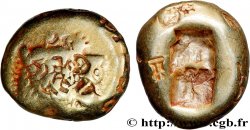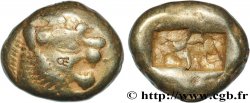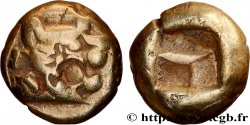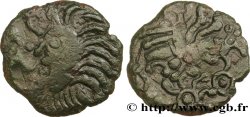Live auction - bgr_349800 - LYDIA - LYDIAN KINGDOM Trité d’électrum
得先注册又得到批准才可以报价。为了报价注册. 客户应该得到公司允许,那种过程需要 48 个小时。别等出售结束那一天才登记。您报价的话等于您赞成买那物品,而且按« 保价 » 证明您接受 cgb.fr 因特网拍卖使用法.
报价时只可以出全数值欧元总额。物品描述也说明销售结束时间,结束后出价都不会生效。 报价命令转达有时变动,等到最后秒钟增加否决的可能会。想多了解的话请注意 因特网拍卖常问
最高出价方将支付18%的不含税的拍卖费用
最高出价方将支付18%的不含税的拍卖费用
| 估算 : | 4 500 € |
| 价格 : | 3 215 € |
| 最高出价 : | 3 300 € |
| 拍卖结束日期 : | 31 March 2015 14:05:30 |
| 竞拍人 : | 2 竞拍人 |
种类 Trité d’électrum
日期: c. 610-550 AC.
铸币厂名称/城市 Sardes, Lydie
材质 electrum
直径 11 mm
模子方针 - h.
重量 4,72 g.
稀少度 R2
关于品相的说明
Exemplaire sur un flan ovale, bien centré avec une usure régulière. Petite contremarque sur la joue du lion. Joli carré creux au revers bien venu à la frappe avec une petite contremarque en forme de lyre. Jolie patine de collection ancienne
出版目录中的项代码 :
家谱
Cet exemplaire provient de la collection du Docteur Frédéric Nordmann
正面
正面的文字 ANÉPIGRAPHE.
正面的说明书 Tête de lion à droite, verrue sur le front (étoile).
背面
背面的说明书 Double carré creux informe.
评论
Deux petites contremarques, une au droit formée de trois globules dans un triangle en creux ; au revers, au-dessus du carré creux, contremarque en forme de “lyre”. Nous n’avons pas relevé d’identité de coin pertinente pour ce type qui semble néanmoins plus rare que ne le laissent supposer les principaux ouvrages de numismatique. C’est la première fois que nous proposons ce type à la vente qui est un véritable petit monument, précurseur de la numismatique.
Two small countermarks, one on the obverse formed by three globules in a hollow triangle; on the reverse, above the hollow square, a countermark in the shape of a “lyre”. We have not found any relevant die identity for this type, which nevertheless seems rarer than the main numismatic works suggest. This is the first time that we have offered this type for sale, which is a true little monument, a precursor to numismatics.
Two small countermarks, one on the obverse formed by three globules in a hollow triangle; on the reverse, above the hollow square, a countermark in the shape of a “lyre”. We have not found any relevant die identity for this type, which nevertheless seems rarer than the main numismatic works suggest. This is the first time that we have offered this type for sale, which is a true little monument, a precursor to numismatics.







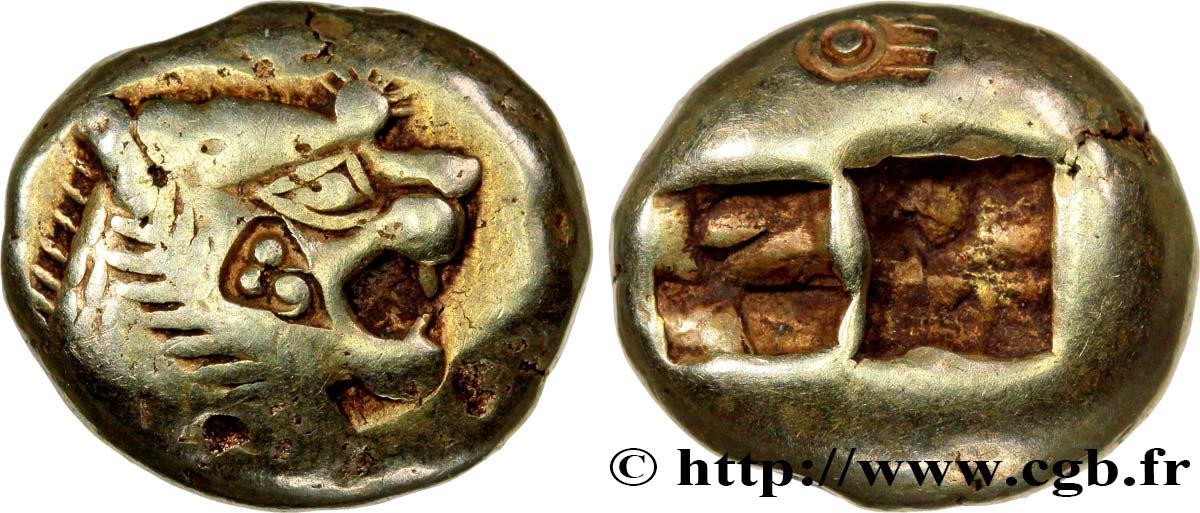
 对产品描述纠错
对产品描述纠错 打印
打印 分享我的选择
分享我的选择 提问
提问 Consign / sell
Consign / sell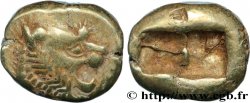
 产品介绍
产品介绍
